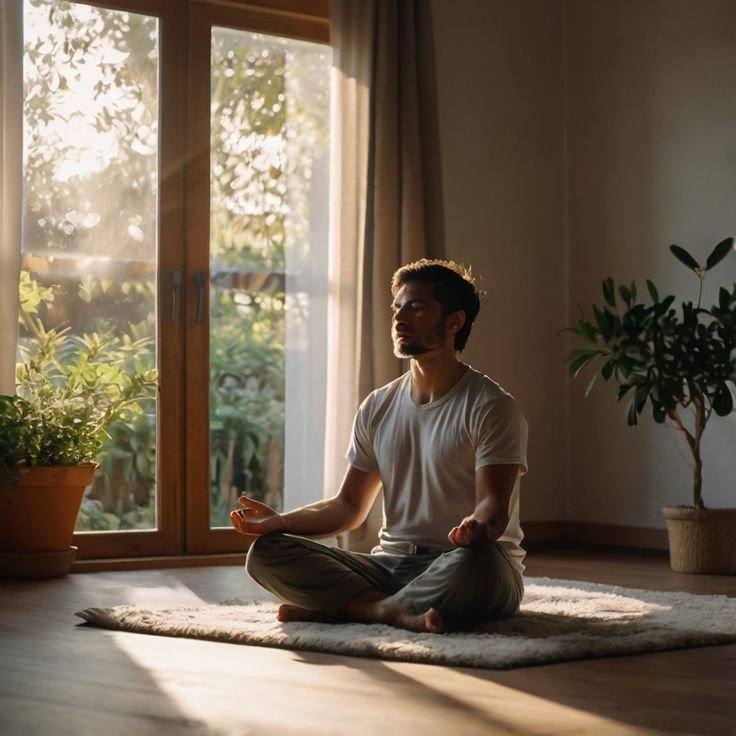
Introduction: Why Quick Yoga Works for Stress Relief
In today’s fast-paced world, stress is an inevitable part of life. However, yoga offers a simple yet powerful antidote. Even a 10-minute yoga session can work wonders by calming your mind, relaxing your body, and resetting your nervous system. This article explores how short yoga routines fit into busy schedules, their science-backed benefits, and practical routines you can try today.
The Science of Yoga and Stress Relief
- Cortisol Reduction: Studies show that yoga lowers cortisol, the stress hormone, within minutes of practice.
- Improved Heart Rate Variability (HRV): Yoga increases HRV, a marker of resilience to stress.
- Mind-Body Synchronization: Through movement and breath control, yoga fosters a connection between the physical body and the mind, helping regulate emotions effectively.
What Makes 10 Minutes Enough?
- Focused Practice: A short session targets stress without overwhelming your schedule.
- Quick Activation: Poses like the Child’s Pose (Balasana) or Cat-Cow Stretch stimulate the parasympathetic nervous system, inducing relaxation instantly.
- Consistency Over Duration: Regular 10-minute practices can be more beneficial than infrequent long sessions.
Essential Components of a 10-Minute Yoga Routine
- Centering and Breathwork: Start with 1-2 minutes of diaphragmatic breathing or Alternate Nostril Breathing (Nadi Shodhana).
- Dynamic Movements: Perform poses like Downward Dog or Sun Salutations to release tension.
- Relaxation Poses: End with Savasana or a seated meditation for ultimate stress relief.
Step-by-Step 10-Minute Yoga Routine
- Begin with Breath Awareness (2 Minutes)
- Sit in a comfortable position, close your eyes, and take slow, deep breaths. Focus on inhaling through your nose and exhaling slowly.
- Dynamic Cat-Cow Stretch (2 Minutes)
- Get on all fours. Inhale, arch your back (Cow Pose), and exhale as you round it (Cat Pose). Repeat slowly to release spinal tension.
- Child’s Pose (2 Minutes)
- Kneel on your mat, sit back on your heels, and stretch your arms forward, resting your forehead on the ground. Breathe deeply to relax your lower back.
- Seated Forward Fold (2 Minutes)
- Sit with legs extended, and gently fold forward, reaching toward your feet. Feel the stretch in your hamstrings and spine.
- End with Savasana (2 Minutes)
- Lie flat on your back, arms relaxed by your sides. Close your eyes and focus on your breath as your body absorbs the benefits of the practice.
Customizing Routines for Individual Needs
- For Morning Energy: Add a few standing poses like Mountain Pose or Warrior II to invigorate your body.
- For Bedtime Calmness: Focus on restorative poses like Legs-Up-The-Wall (Viparita Karani) to promote relaxation.
Benefits of 10-Minute Yoga for Stress Relief
- Immediate Stress Reduction: Activates the relaxation response, calming the mind.
- Improved Focus and Productivity: Short breaks rejuvenate your mental clarity.
- Physical Relaxation: Releases muscle tension accumulated from prolonged sitting or daily stress.
Tips for Making Yoga a Daily Habit
- Set a consistent time daily—morning or before bed works best.
- Use apps or videos to guide your routine until it becomes second nature.
- Keep your yoga mat accessible as a visual reminder.
Real-Life Success Stories
- Sarah’s Journey: A busy mother of two who found peace with a nightly 10-minute routine.
- James’ Transformation: A software developer who reduced anxiety through morning yoga.
Conclusion: Embrace the Power of 10 Minutes
Stress relief doesn’t have to mean spending hours in a studio. With just 10 minutes a day, you can harness the transformative power of yoga to bring balance, calm, and clarity to your life. Try this today and experience the benefits firsthand.




